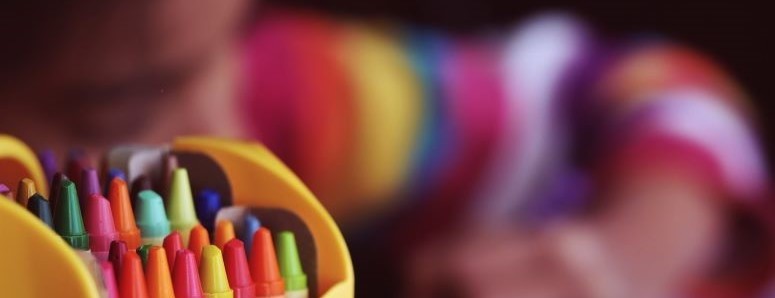
Top Developmental Benefits to Getting Creative with Kids
In recent years, curriculum in schools across the country (and in other parts of the world) has shifted heavily toward common core subjects of reading and math. There has been a very noticeable trend away from the arts and towards the general subjects, and, as a result, it is actually more important than ever that parents and caregivers try to supplement some of this at home.
If you don’t have a degree in child development, you may not actually be aware that there are several key developmental benefits to getting creative with kids! I have listed some below:
Motor Skill Development: Many of the motions involved in making art—holding a paintbrush or scribbling with a crayon—are essential to the growth of fine motor skills in young children. Preschool-aged children are expected to learn to draw a circle and use safety scissors, as using tools such as scissors and eye droppers for activities helps to develop dexterity in children, a skill that is actually essential for learning to write.
The pincer grasp is another important developmental milestone that typically occurs during the first year of life, involving the child’s ability to pick up small objects between his thumb and index finger. Simple creative activities such as building and creating with play dough and using eye droppers for science experiments can strengthen this.
Language Development: For very young children, making art provides opportunities to learn descriptive words for colors, shapes and actions. When toddlers are first starting to talk, parents can do simple art activities and describe the process to encourage their child’s language development. For example, a parent may point to and describe a red crayon to their toddler, while describing to them that this is the tool that we use to draw a “balloon” on a piece of paper. Describing each step of this process while constructing a picture with your child is literally teaching and exposing them to several new words, sights, and sounds, thus building and improving their language development.
Problem Solving and Critical Thinking Development: Even for the very young, the experience of making decisions and choices while creating art is developmentally beneficial. They are being given the chance to think creatively, come up with their own ideas and be resourceful. Whether it is which color to use for their drawing or something more sophisticated, there are many benefits to practicing using one’s imagination and working through any problems that arise along the way.
Visual-Spatial Processing Development: Visual-Spatial processing is the ability to tell where objects are in space and how far objects are from one’s self and from one another. Scribbling, sculpting with play dough and threading beads on a string all develop these skills which are more important now than ever.
Creative and Innovative Thinking: When kids are encouraged to express themselves and take risks in creating art, they develop a sense of creativity and innovation that will be important in their adult lives. I hear over and over these days that the future of the workforce is going to be given to forward-thinking, creative people who seek out new improvements and ways of doing things. Art is a way to encourage the process of innovation and making things and processes better.
Children need to know more about the world than just what they can learn through written words, flashcards, numbers, and screens. Art education within school and and creative activities at home are both instrumental to teaching children how to interpret and use visual information.
I am a mom of three little ladies, ages 4, 6, and 7. I hope that while here, you find inspiration to live creatively with your children – and most importantly, have fun!